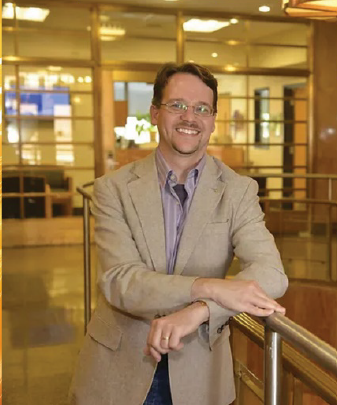Quantifying Dynamics of Plasmas Out of Local Thermodynamic Equilibrium
Quantifying Dynamics of Plasmas Out of Local Thermo-dynamic Equilibrium
The seminar will be conducted in person and simulcast via Zoom.
Passcode: MIPSE
Date and Time
Location
Hosts
Registration
-
 Add Event to Calendar
Add Event to Calendar
Speakers
Prof. Paul Cassak of West Virginia University
Quantifying Dynamics of Plasmas Out of Local Thermodynamic Equilibrium
Many plasmas are not in local thermodynamic equilibrium (LTE), and describing their evolution is a forefront research area across plasma science. Often, the evolution of non-LTE plasmas is interpreted using the first few fluid moments of the phase space density – density, momentum, bulk kinetic energy, and internal energy. However, for a system not in LTE, there are an infinite number of possible moments of the phase space density that can be important. The evolution of higher order moments is typically not considered. We discuss an approach to describe the evolution of all higher order moments (Phys. Rev. Lett., 130, 085201, 2023) that employs the so-called relative entropy (J. Soc. Indust. Appl. Math., 13, 259, 1965) describing all the non-LTE structure of the phase space density. We derive an equation for its time evolution and argue its form is related to the first law of thermodynamics. We introduce a new quantity we call the “higher order non-equilibrium terms” (HORNET) which quantifies the rate a phase space density approaches or moves away from LTE (Phys. Rev. E, submitted). It has dimensions of power density so it can be directly compared to standard power densities. We demonstrate the results in particle-in-cell simulations of magnetic reconnection, decaying plasma turbulence, and Landau damping of Langmuir waves.
Biography:
Paul Cassak is a professor in the Department of Physics and As-tronomy at West Virginia University. He earned his Ph.D. at University of Maryland, College Park, and was a postdoctoral researcher at University of Delaware. He is a Fellow of the American Physical Society (APS) and the American Geophysical Union (AGU), and was honored with a AGU Macelwane Medal. He has served in numerous high-profile community service roles and has won college awards in research, teach-ing, and service/outreach. He is currently the Associate Director of the WVU Center for KINetic Experimental, Theoretical, and Integrated Computational (KINETIC) Plasma Physics.
An IEEE Southeastern Michigan Section event. All are welcome. Consider becoming an IEEE member if such similar events are of professional/academic interest to you


